 March 11: We are used to seeing them on billboards, in our print-on-demand photobooks, projected, or on the screen of our phone, or as thumbnails on the back of our camera, but there was a time when photographs remained the size they were when they were taken.
March 11: We are used to seeing them on billboards, in our print-on-demand photobooks, projected, or on the screen of our phone, or as thumbnails on the back of our camera, but there was a time when photographs remained the size they were when they were taken.
There was also a time when the darkroom was solar-powered.
I’m talking of course about the solar camera (or solar enlarger) about which I have written here, and from that and with further research have authored the article on it on Wikipedia.
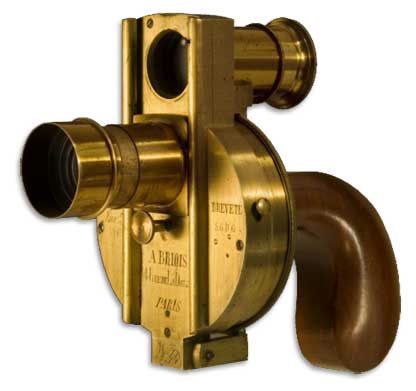
The daguerreotype prevailed in the United States where other countries adopted paper negatives. It faced extinction by 1860 because it could only be reproduced or enlarged by copying with another daguerreotype camera. The capacity of glass plates to be enlarged by the solar camera drove a burgeoning industry. Even a carte-de-visite, which was of humble dimensions 5.4 cm × 8.9 cm, and the tiny, 1 inch square negatives of the handheld ‘Pistolgraph’ camera invented in 1859 by British photographer Thomas Skaife, could be blown up. Such prints proved immensely popular in the mass market that considered “big is better”.
Here, in the detail below you can see five solar cameras on the roof of a busy photography studio in New York; the condenser lens of one glints in the sunlight and is in use, while others have their covers on (they were known to self-immolate if left unattended!). The workers, who seem to be inured to any vertigo despite the absence of railings, are taking a break to peer over the guttering at the parade that celebrates the Treaty of Versailles ending the Franco-Prussian War.
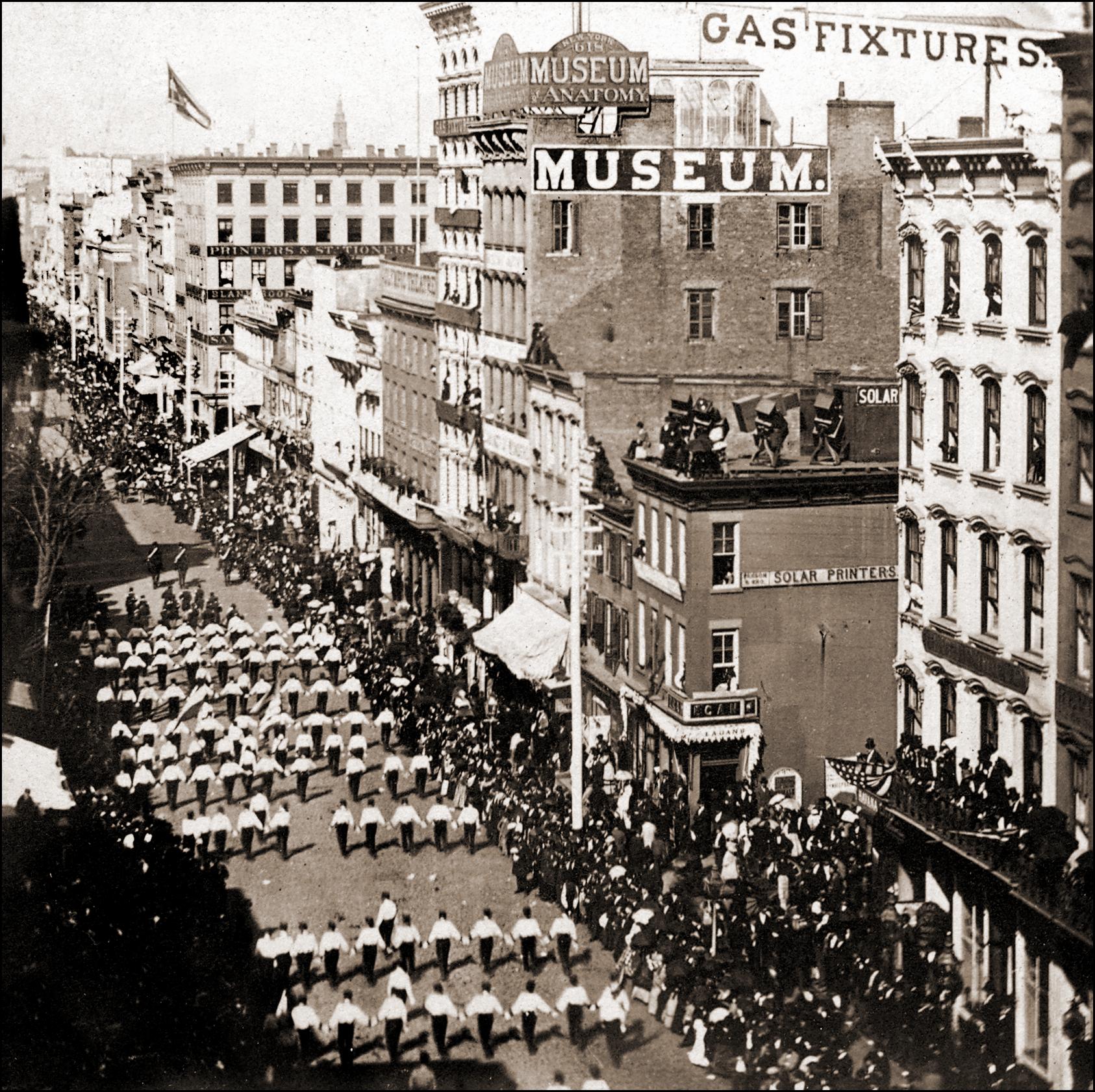



The device was in use from at least 1857 and was designed several times, first, and as a resounding commercial success, by American David Acheson Woodward and his partner Marcus Aurelius Root whose studio at 140 Chestnut St., still a photography business today, displays in these 1866 photographs some solar enlargements in its corner casement windows, which gives an idea of their scale. Compare them with the faces of Root and one of his employees at the other windows and you can see that many of the heads are life-size.
Though he took out a patent, however, it is not true to say Woodward invented the apparatus. “The Silver Sunbeam” is an apt descriptor of it, and that is the name of a manual “on sun drawing and photographic printing” by John Towler and in it he takes issue with those — and there were several including the German Jacob Wothly and Belgian Désiré van Monckhoven — who would claim to have been the orginator of the apparatus;
“The appendages to the solar camera and to the solar microscope are facsimiles of each other; but the solar microscope existed before photography had been elicited from chaos ; the solar camera, therefore, is a mere imitation of its antecedent ; the patentees of the latter instrument, then, can make no claim to originality of design ; their only claim can be the application of the instrument to photography.”
He traces the origin of this photographic enlarger to the solar microscope which was invented by Polish-German-Dutch physicist Daniel Gabriel Fahrenheit (1686–1736) — he of the temperature scale— by making of the existing compound microscope (dating back to 1620) a form of magnifying projector of transparent objects using bright sunlight as a light source. Towler notes that its field of view was smaller than the enclosure of a printed letter ‘e’. It was taken up and improved by German physician and maker of microscopes Johann Nathanael Lieberkühn and in England, optician John Cuff added an adjustable mirror. Then it was used by Wedgwood and Davey, nearly fifty years before Nièpce produced the first permanent photograph, to make a fleeting image on leather treated with silver nitrate (hence the ‘Silver Sunbeam’):
… experiments of Wedgwood were actually made several years previous to [their] publication in 1802 ; because at that date he had been dead for seven years. The surface prepared with nitrate of silver was not sensitive enough to receive an impression in the camera obscura, although Sir Humphry Davy succeeded in getting a very faint image in the solar microscope, where the picture was very much condensed in size or situated very near the focus of parallel rays.
By 1837 Rev. Joseph Bancroft Reade of London had obtained a permanent image from the solar microscope using tannin as a developer and, according to John Werge‘s 1890 Evolution of Photography, for the first time in photography used hypo as a fixer.
The solar camera was very quickly taken up by photographers around the world, and here by Australia painter, photographer and lithographer, Edwin Dalton who came to Australia from America in 1853. He worked as as portrait painter in Melbourne and moving to Sydney by July 1854 opened his ‘Dalton’s Collodion Portraits’ at 243 George Street (1855-57) as one of the more expensive photographers, catering to upper class clientele, like these twins Alice Mary and Sarah (aka Saidee) Consett, daughters of Sir Alfred Stephen, Chief Justice of New South Wales whom he photographed after moving to the grandly named Royal Photographic Gallery at 320 George Street (1863-65).
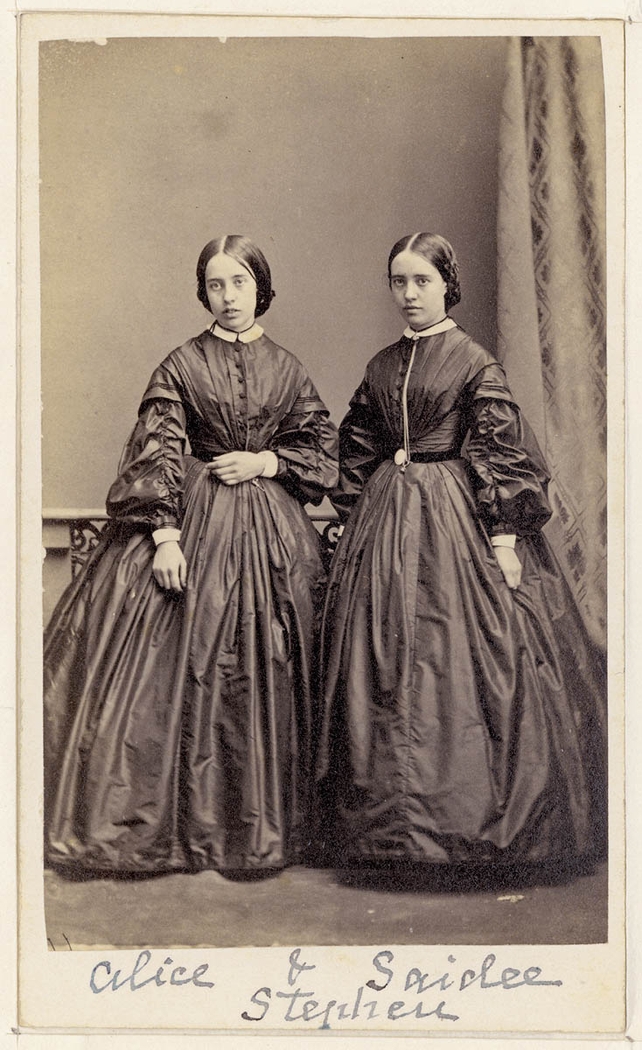
This is the year that his studio acquired a solar camera, among the first in the colony and he had probably heard about it from contacts in America. A lengthy report (perhaps paid for by Dalton) was published in The Sydney Morning Herald, Fri, Nov 27, 1863, page 7
ENLARGED PHOTOGRAPHIC PORTRAITS.-A recent and valuable invention in photography has been brought into successful application at Mr. Dalton’s establishment in George Street [Sydney] We refer to the enlargement of portraits, by means of an instrument known as a solar camera.
It is well known that large portraits taken by the ordinary process are more or less imperfect towards the edges; even those taken by the largest and best lenses have portions of the figure distorted. This difficulty is, however, overcome by taking a small portrait and then transferring it by photographic process to a larger field. The method adopted by Mr. Dalton, in the first instance, to take a small negative of the ordinary carte-de-visite size. This is taken expressly for the purpose, as it requires to be more perfect than ordinary photographs.
The enlargement of the picture is effected by placing it in a solar camera, which is so constructed that the sun’s rays are condensed upon the negative, the image of which is projected upon a screen placed in a dark chamber (much on the principle of the magic lantern). On the screen the prepared paper Is fixed, and the Image gradually impressed, the sun’s rays being kept constantly on the negative by the aid of machinery. The time required to print a life-size is about three hours. It can be produced in as many minutes by what is known as development printing, but the results are lacking in brilliancy and definition.
It is owing, we believe, to the inconstant nature of the light In England that this branch of photography has not made much progress there, as a clear cloudless sky is absolutely necessary for the process; for which reason the celebrated Parisian photographer Desderi [sic], has an establishment in Algeria for the production of these pictures. The self-acting apparatus for keeping the negative constantly exposed to the sun (in which a very familiar contrivance has been ingeniously adopted) is the work of Mr. Bradley, the photographic operator at Mr, Dalton’s. Some life-sized portraits have been produced by this process of enlargement; their superiority to those taken direct is at once seen in their entire freedom from distortlon, as well as in the superior definition and harmony of tone
The “familiar contrivance … ingeniously adopted” was of course a clockwork motor that rotated the whole device to track the sun and the “‘distortion” referred to is that which we see in Julia Margaret Cameron‘s photography which she had taken up also in the early 1860s.

She wanted a sense that her portraits were ‘from Life’; made life-size or near life-size using a camera that took 38cm x 30.5cm (15″x12″) plates (the average human head is approx 24 x 16 cm). Despite the availability of solar camera, she contact-printed all her negatives; but the relatively wide aperture of f8 for whole head close-ups entailed exposures up to five minutes and shallow focus. Very apparent at that scale, it was an effect she chose to work with despite her male colleagues’ ridicule of her ‘out-of-focus’ imagery.
The ‘inventor’ of the solar camera Woodward was professor of drawing at the Government School of Design and surely therefore an advanced draftsman.
Why then did he need a solar camera?
The clue is in his patent application:
The object of my invention is, first, to furnish the artist or draftsman with an instrument by which he may be enabled to produce an accurate image of the object to be delineated by photography, and that will afterward portray on his canvas or other material an infallible representation thereof in light and shade, whereby a most accurate likeness or copy of any desired size may be produced, requiring only one sitting of the subject; and, secondly, to enable the photographic artist to print a picture on prepared paper, canvas, or other material of greater or less dimensions than those of the negative ordinarily used for such purpose, whereby he is enabled to use a more perfect negative produced by bringing the entire field of his picture within the focus of his instrument, and afterward throwing it up and printing it by concentrating the rays of light through the negative in the instrument and focusing the object on the prepared paper or canvas, instead of printing by superposition in the usual way
Reading between his lines, it becomes clear that a the purpose of the solar camera to is provide “a most accurate likeness or copy of any desired size” on canvas or paper, supports usually used by an artist, who will then trace it as a drawing or overpaint it.
In the above mid-19th century example the matt has been removed from the frame (the image is darkened where constantly exposed to light and the soot of gas lamps) and at the edges the underlying photograph can be clearly seen.

American Erastus Salisbury Field (1805 – 1900) started painting when Nicèphore Nièpce was producing the first permanent photographs, in the 1820s. Trained in New York, he moved back home to Massachusetts where he produced portraits like the one of the young woman below in a quaint, naîve, oddly proportioned ‘folk’ style but with acceptable ‘likeness’ to the sitter. He moved back to New York to Greenwich Village where he became a daguerrotypist, perhaps hand-colouring his own portrait.
His history painting Lincoln with Washington and his Generals of 1881 below is quite different in execution; the faces are rounded and well modelled, almost photographic one might say, and indeed the portrait of Lincoln in this line-up is remarkably similar to a photograph of him, one of 37 by Alexander Gardner (though Lincoln did sit for 33 photographers and 127 portraits in his lifetime). Washington of course was dead well before the advent of photography but his head here is set at the same angle as in Glibert Stuart’s 1790 painting, which was widely reproduced in engravings.
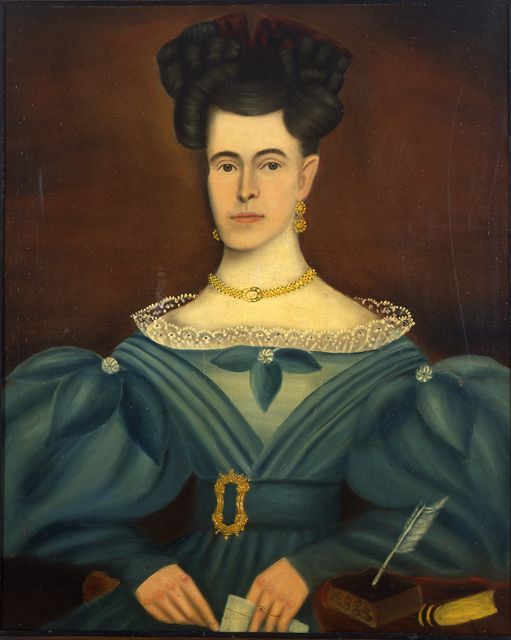
Field makes little attempt to keep the lighting consistent and given the accuracy of the faces in contrast to the rest of the painting it is likely that he employed the solar camera in this case to transfer copies of other’s engravings or paintings to the canvas, and fabricated the rest of the scene.
Of course other means of tracing a photograph other than working straight over the top of it, would be to project an image from a ‘magic lantern’ onto the surface, which is good for finding outlines though more difficult in translating tones and working with the interference of the superimposed projection.
That Woodward’s ‘invention’ was preceded by others is suggested by accounts of the ‘crayon portrait’, more properly identified as photo-crayotypes, chromatypes or crayon collotypes here in Australia prior to the Woodward 1857 patent.
I am indebted to Geoff Barker for uncovering these instances in his role since 2016 as the Senior Curator at the State Library of New South Wales (he previously had charge of collections at the City of Parramatta, Powerhouse Museum, Collections Australia Network, St George Regional Museum and was Curator of Photography at Macleay Museum).

Barker shows that English painter, silhouettist and photographer Frederick Frith (1819-1871 — no relation to Francis), after arriving in Australia, had by 1855 secured ‘a special apparatus’, perhaps a solar camera, from Voigtlander and Son of Vienna and was making portraits on salt paper prints finished in oils, watercolours or crayons which he called ‘Chromatypes’. In this 1858 example one can see clearly how Frith has worked in watercolour greys, browns and skin tones over a faint image from a collodion negative. The image however, is 21.2 x 16 cm, not life sized. Barker also notes that images of that larger dimension, using Frith’s method, were achieved to much acclaim by Douglas Kilburn, in Melbourne, in October 1856 which he sold as ‘chromatypes’.

Barker refers also to Dalton, (though as Edward, not Edwin as he is called elsewhere) in the case of a particularly exquisite example of a life sized ‘crayon portrait’, or crayotype which has the appearance of a delicately-worked pastel drawing but also the very evident freshness of expression and accuracy of a portrait photograph.

Back in the United States, the medium was big business and examples of the technique, whether achieved using the solar camera of later enlargers powered with artificial light sources, abound into the early 20th century. Most retain the monochrome of the original; only a competent, practiced artist could produce as convincing a colour image as Dalton’s. But there is a distinction between this more extreme working-over of photographs and those are called ‘hand-coloured’.

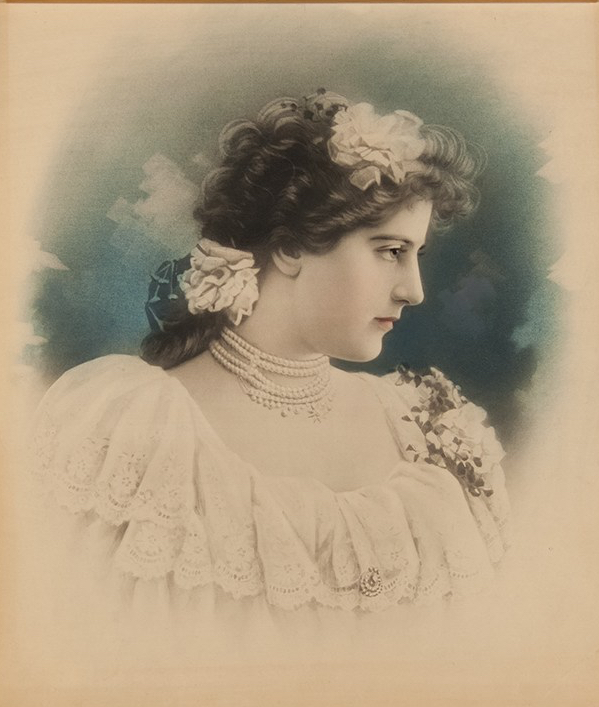

A central image of The Family of Man exhibition is Nina Leen’s Ozark Family which provides the context for this genre; carefully framed and preserved ‘crayon portraits’ of their forebears constitute a form of ancestor worship akin to the portrait busts found in ancient Roman villas in Pompeii.
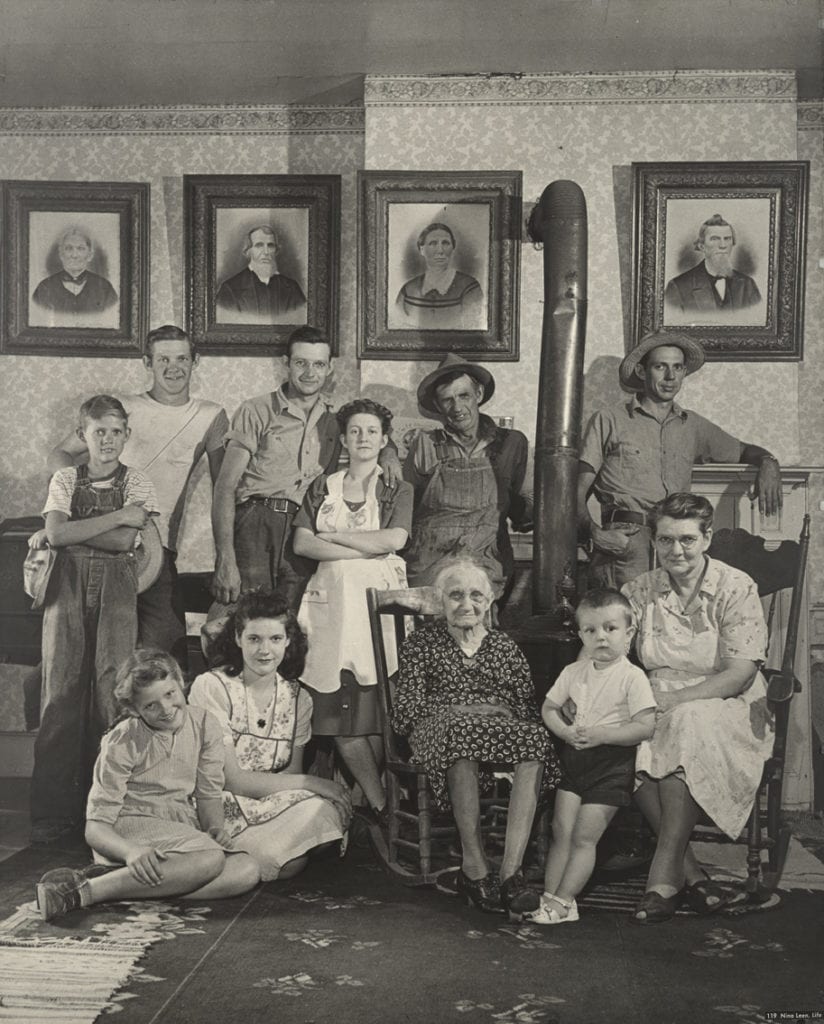




2 thoughts on “March 11: Aggrandisement”